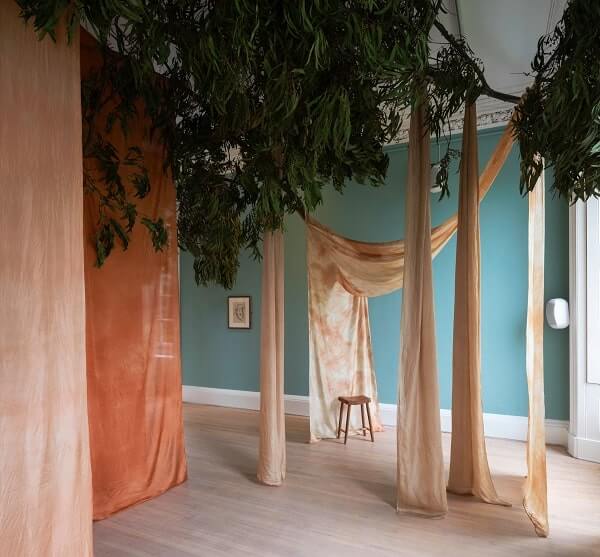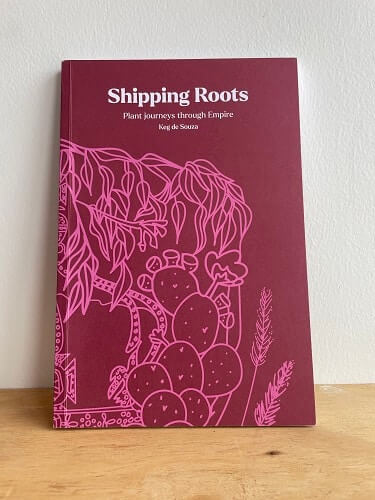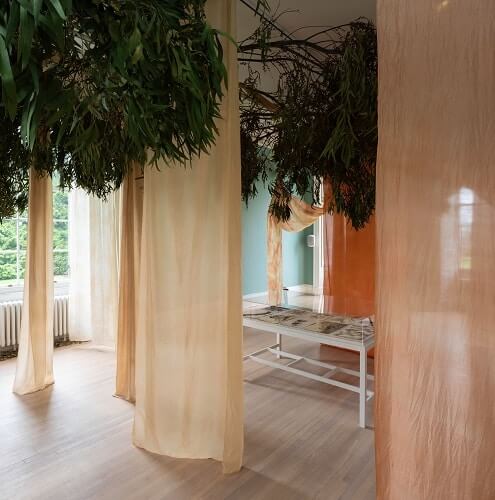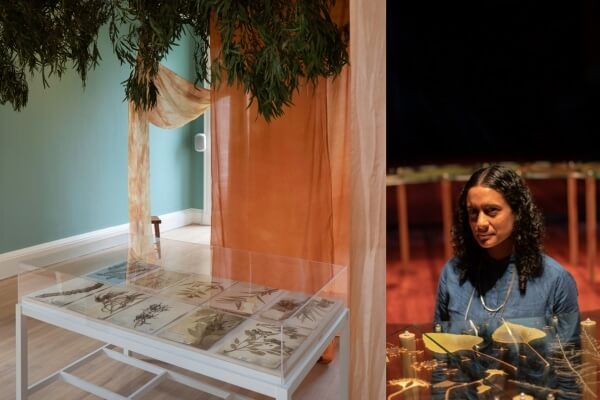Keg de Souza is a visual artist of Goan heritage – her dad is from Assagao and mum from Aldona – whose ancestral lands were colonised for over 450 years by the Portuguese. Her parents moved to Boorloo, colonially known as Perth, in Western Australia in the early 1970s. Since 2000, she has lived as a settler on other people’s ancestral lands (that belong to the Gadigals, in the city colonially known as Sydney).
Naturally then, her artistic practice often explores ideas of displacement through her own lived experience. Interestingly, her next exhibition, ‘Blue Haze: Awaba’, follows the journey of eucalyptus and its 850 species (which are native to Australia) that have been uprooted, and moved over oceans and lands, just like her.

“At the hands of the British, the eucalypt was taken away from Australia and spread across the globe, including to India, as one of the most popular trees planted for timber and pulp plantations,” Keg tells Indian Link.
She published her book Shipping Roots last year and presented an exhibition of the same name at the Royal Botanic Gardens in Edinburgh tracking this journey of the eucalyptus and two other plants. It comprised of three installations: Blue Haze (eucalyptus), Green Hell (prickly pear) and Fleece Fugitives (alien seeds).

Shipping Roots highlighted these plant journeys at the hands of humans – between India, Australia and the UK – and the impact of the movement of these plants has had on land and landscape, especially through cultural loss and in turn climate crisis.
From December 13, 2024 till February 8, 2025, her exhibition ‘Blue Haze: Awaba’ comes to Australia for the first time – at MAC (Museum of Art and Culture) yapang, at Lake Macquarie in NSW.
‘You can’t stop noticing it’
Eucalyptus currently covers over 22 million hectares of land mass across the globe.
“Once you start to see it in other locations, you can’t stop noticing it everywhere you go,” Keg shares.
So, how did the plant actually travel this journey, we ask.
“Various eucalyptus seeds were taken from Australia on some of the earliest boats leaving the colony and heading back to the UK,” Keg begins to tell us.
It was Joseph Maiden (an Englishman who became one of Australia’s most distinguished botanists) who took it upon himself to send out seeds to anyone he could, promoting eucalyptus as a fast-growing hardwood. Keg de Souza
In India, over 170 species were trialled, beginning in the 1840s in the Nilgiri Hills.
“Eucalyptus is now spread throughout India,” she continues, adding that moving this plant from its Aboriginal land and spreading it across the globe has had devastating impacts.
“Its impact is so felt on the land that in some places, like Karnataka, planting eucalyptus has now been banned due to the adverse effects on the land and water. This is not to even mention the native plant and food crop clearances that would have taken place to grow these eucalyptus plantations in the first place.”
‘Nilgiri’ literally means ‘blue mountain’, originally named for the clustered bloom of the blue flowering species strobilanthes kunthiana (kurinji or neelakurinji), but now the region radiates a blue haze due to the eucalyptus plantings.
“A blue haze is often seen around eucalyptus forests or plantations as the oil from the leaves combines with dust particles and water vapour which scatter short wavelength rays of light that are predominantly blue.”

‘Displacement of plants linked to displacement of people’
What are the major takeaways for those visiting Keg’s exhibition, we ask.
“Sharing stories of the journey of eucalyptus away from this continent, (there are many lessons to be learned),” Keg replies. “When species are removed from their own ecology, and away from knowledge holders who know how to care for them, we realise their impact this has on land and place in other locations such as lowering water tables and increasing fire risk.” Keg de Souza
These stories of plants speak to the relationships human share with place.
“Much of this intentional movement of plants was for economic benefit, for empire expansion. The displacement of plants in these stories is intrinsically linked to the displacement of people.”
So far, Shipping Roots has sparked some really interesting conversations and connected Keg to others interested in similar explorations of displacement.
READ ALSO: Small hands, big picture: The making of Hunters Hill Public School’s mural





